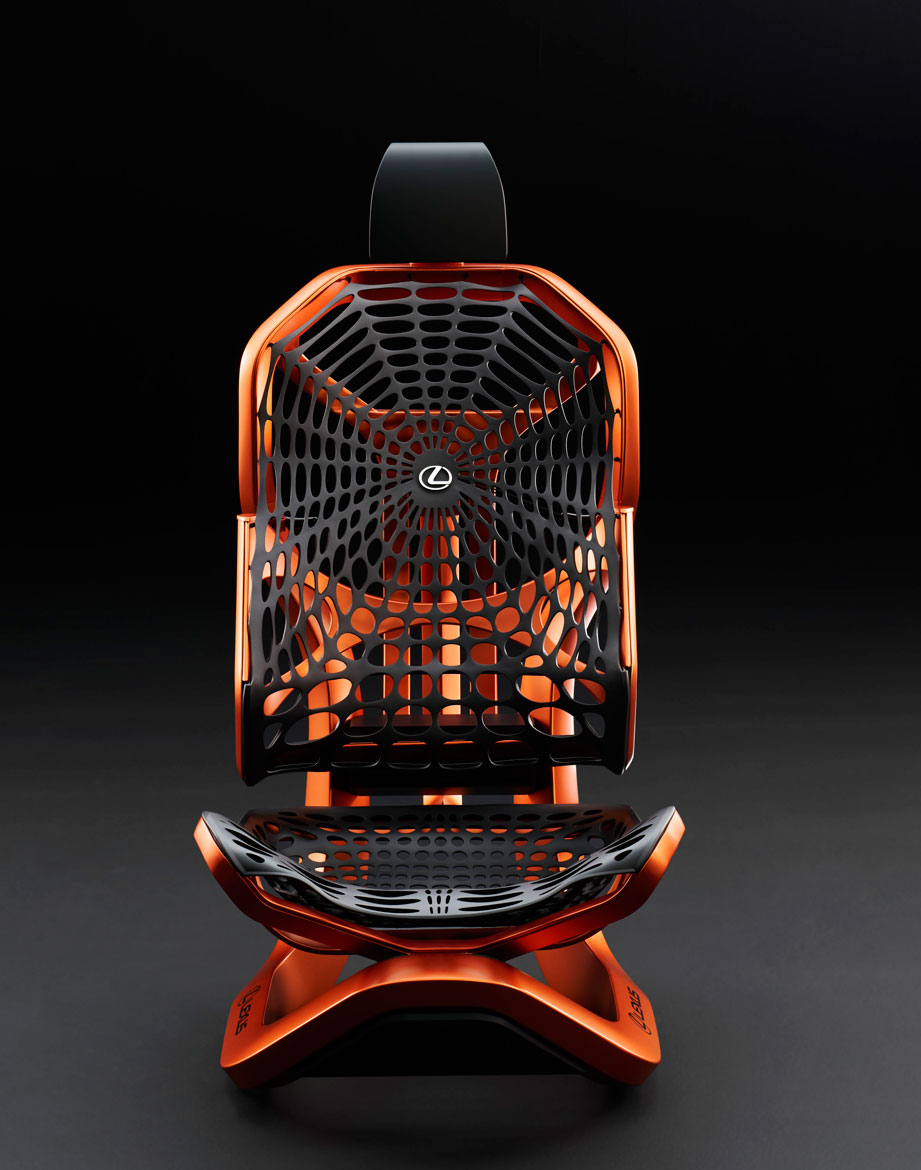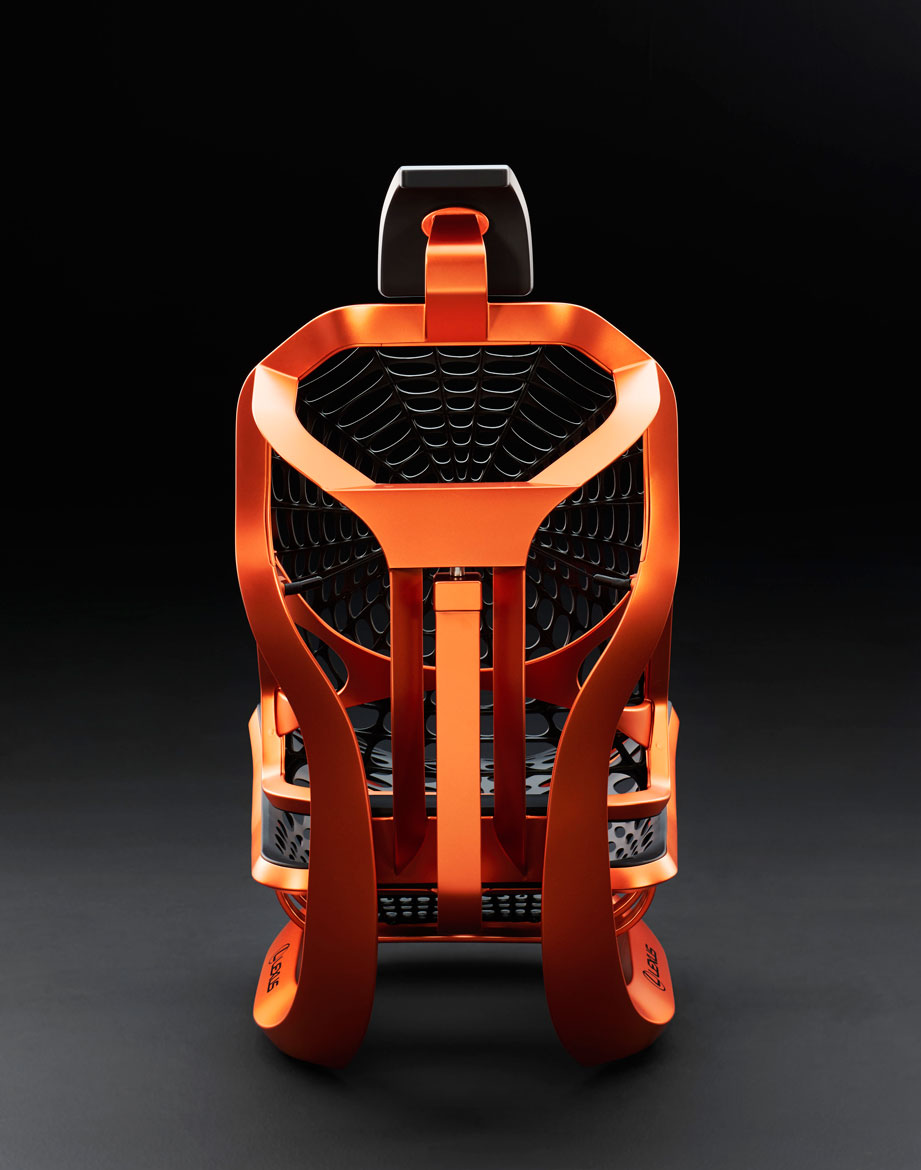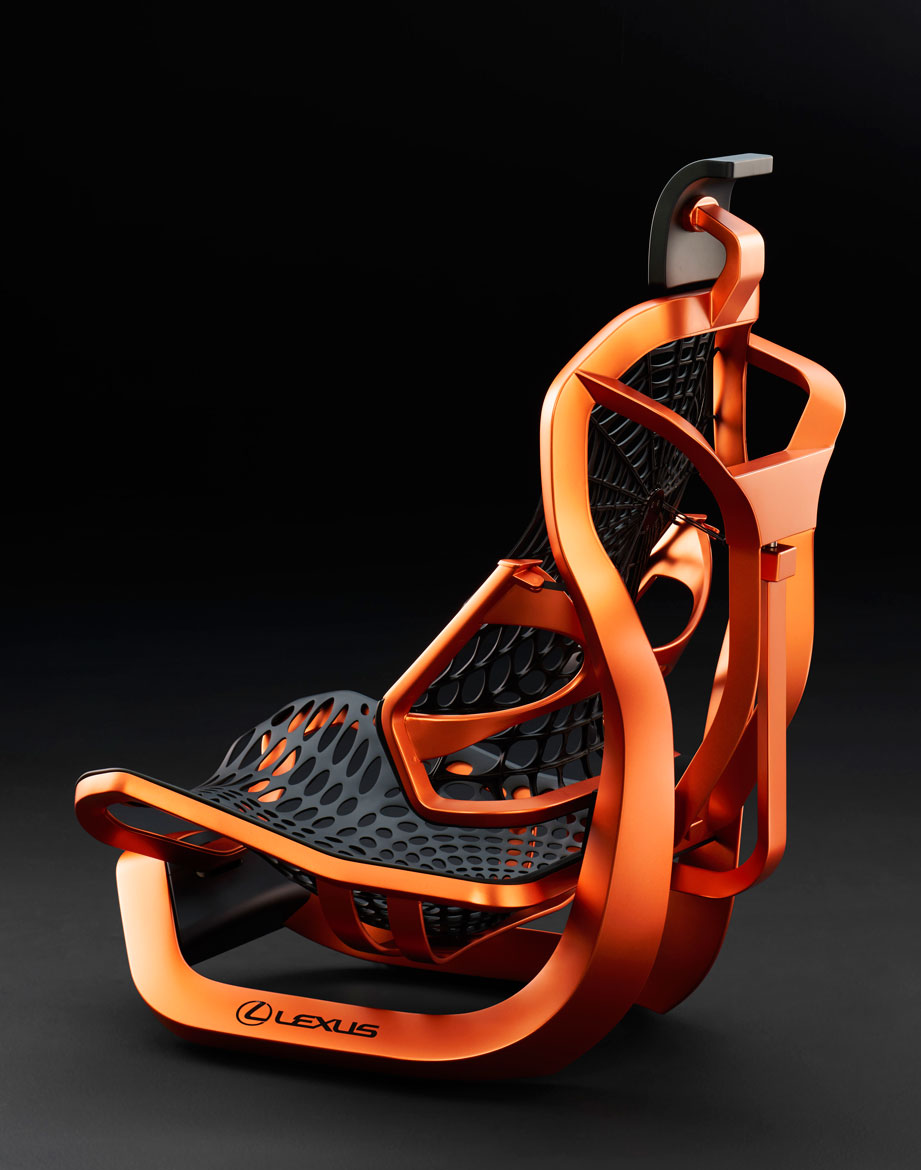The revolutionary Lexus Kinetic Seat Concept makes its world debut at the 2016 Paris Motor Show; its radical fibre net construction re-evaluates the principles of car seat occupancy.
In humans, the spine acts to stabilize the head. It allows the pelvis and chest to rotate in opposite directions, stabilising movement of the head even while walking or jogging.
In order to recreate this movement in car seats, the seat cushion and back rest were designed to move kinetically with occupant weight and external force. Thus, simply sitting in the seat helps stabilise head movement caused by vehicle motion, keeping the field of vision steady. This reduces the burden on occupants, improving ease of driving and comfort.
The seat frame upholstery comprises of a spider web-pattern net with threads that spread out radially from the centre of the back rest. The net is sufficiently flexible to closely fit the shape of the body, dispersing the load to make it possible to sit comfortably for prolonged periods.
The centre of the back rest is at shoulder blade height, which induces rotational movement of the chest around the seat’s pivotal axis. This helps stabilise the head and ensure a high level of support. The seat has also been made slimmer, making the overall car lighter in weight.
The threads of the spider web-pattern construction at the back rest are made from environmentally-friendly, synthetic spider silk materials instead of petroleum-derived materials. The main component of this material is protein, which is created through microbial fermentation, then spun and processed into a new material offering superior shock absorbance (toughness) properties.














